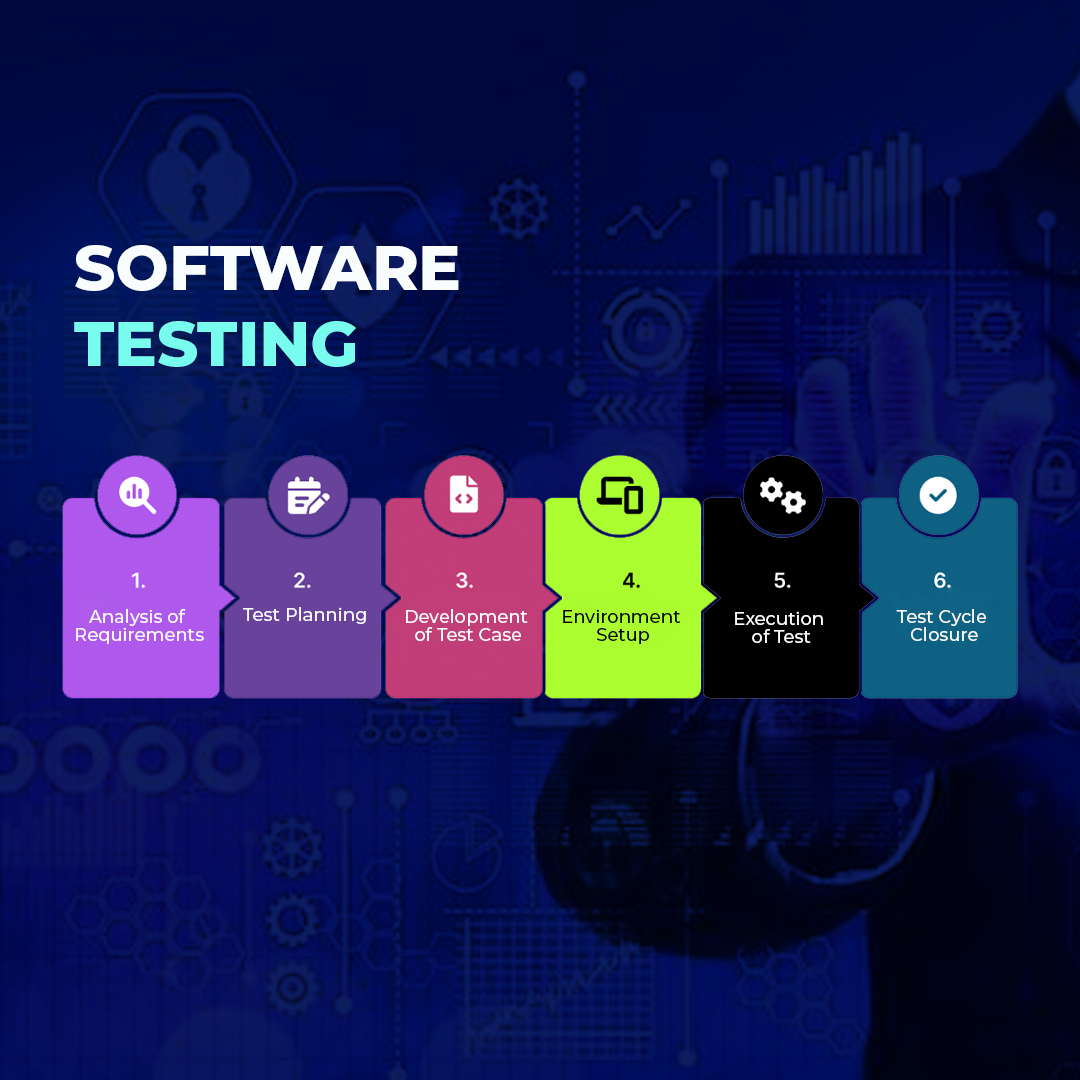Software testing is a critical phase in the development cycle that ensures the delivery of high-quality and reliable applications. This guide serves as a comprehensive introduction to the multifaceted domain of software testing.
It aims to equip beginners with the fundamental concepts, techniques, and tools associated with testing, facilitating their journey into this essential field of software development.
Whether you’re a budding developer, a curious student, or a project manager seeking to understand the nuts and bolts of testing, this guide will provide a solid foundation for your learning process.
What is Software Testing and Why is it Important?
Software testing is the process of evaluating a system or its components with the intent to find whether it satisfies the specified requirements or not. It is a systematic method that assesses the quality of software and ensures that the end product is bug-free.
Testing is important because it identifies errors and defects within the system before it reaches the user. This safeguards the user experience and helps maintain the reputation of the development team.
A poorly tested software can lead to a frustrating user experience, financial loss, and damage to brand reputation. Therefore, software testing is an essential step in the software development life cycle that ensures the release of a reliable, high-quality product.

Types of Software Testing
Software testing can be classified into various types, each serving a unique purpose in the software testing lifecycle.
Functional Testing: Verifies whether the software application’s functions and features meet the specified requirements.
Non-Functional Testing: Concerned with the non-functional aspects of the system such as performance, usability, reliability, etc. It includes testing types like Performance Testing, Security Testing, Usability Testing, and Compatibility Testing.
Performance Testing: Evaluates the software’s responsiveness, scalability, and stability under various conditions.
Usability Testing: Assesses the user-friendliness and overall user experience of the software.
Security Testing: Identifies vulnerabilities and weaknesses in the software’s security measures, ensuring that it is protected against potential threats and attacks.
Regression Testing: Regression testing is performed to ensure that the previous functionality of the software application is working fine and the new changes have not introduced any new bugs.
Smoke Testing: High-level type of testing where the tester checks the basic functionalities of the software.
Sanity Testing: In sanity testing, the tester checks the newly added functionalities of the software.
Exploratory Testing: Testers explore the software without predefined test cases to identify defects and gain a deeper understanding of the application’s behavior.
Alpha and Beta Testing: Alpha testing is conducted by the development team to catch bugs before releasing the software to a select group of users in a controlled environment. Beta testing involves releasing the software to a larger group of external users to gather feedback and identify any remaining issues.
These are just some of the various types of software testing, each serving a specific purpose in ensuring the quality, reliability, and performance of the software application. Organizations may use a combination of these testing types based on their project requirements and objectives.
Benefits of Software Testing
Improved Software Quality: Software testing helps identify and fix defects, ensuring that the software meets the desired quality standards and works as intended.
Early Bug Detection: Testing catches bugs and issues early in the development process, reducing the cost and effort of fixing them at later stages.
Customer Satisfaction: Thoroughly tested software leads to better user experiences, increasing customer satisfaction and loyalty.
Risk Mitigation: Testing helps assess and mitigate potential risks associated with software failures, ensuring a more reliable and robust product.
Cost-Effectiveness: Detecting and resolving issues early on minimizes maintenance costs and reduces the risk of expensive post-release fixes.
Compliance and Standards: Testing ensures that the software complies with industry regulations and standards, especially in fields like healthcare and finance.
Enhanced Security: Software testing identifies vulnerabilities, reducing the risk of security breaches and protecting sensitive data.
Optimized Performance: Testing evaluates the software’s performance under various conditions, ensuring it functions optimally and efficiently.
Faster Time-to-Market: Streamlined testing processes allow for quicker delivery of software, gaining a competitive advantage in the market.
Continuous Improvement: Feedback from testing drives iterative improvements, making the software more reliable and feature-rich over time.
User Confidence: A thoroughly tested product inspires user confidence, encouraging adoption and positive word-of-mouth.

Software Testing Process
The software testing process is a structured approach that is divided into various phases to ensure a thorough evaluation of the software application.
It begins with the ‘Test Planning’ phase, where the scope, strategy, and objectives of testing are defined. It is during this phase that test environments are also set up.
This is followed by the ‘Test Development’ phase, where test conditions are identified, and test cases are designed and written. Test data is prepared, and the traceability matrix is created to ensure that all requirements are covered.
Once the test development is completed, the ‘Test Execution’ phase begins. During this phase, the test cases are executed, and any defects found are logged and reported.
After this, the ‘Test Closure’ phase takes place. It involves the evaluation of the cycle completion criteria based on test coverage, quality, cost, time, critical business objectives, and software. A test closure report is prepared, and lessons learned are documented for future use.
The software testing process is iterative, meaning it is repeated every time an alteration is made in the software to ensure that it is free from bugs, and working as intended.
Articles you may like:
Future of Software Testing: What to Expect?
Top 10 High Paying Software Testing Jobs in 2023
How to Learn Software Testing?: Resolve your Queries
How to Prepare for Certified Software Tester Exam?
Challenges faced in Software Testing
Lack of resources: Often, organizations may lack the necessary resources, such as skilled testers or the appropriate testing tools, posing a significant challenge.
Time constraints: Due to tight deadlines or frequent changes in project requirements, there may not be enough time to perform thorough testing, thereby compromising the quality of the software.
Incomplete requirements: The absence of detailed, clear, and stable requirements can make it difficult for testers to identify what needs to be tested and how.
Communication gaps: In some cases, poor communication between the testing team and the development team can lead to misunderstandings and inefficiencies in the testing process.
Testing all possible input combinations: It is nearly impossible to test for all potential combinations of inputs, especially in large, complex systems.
Tools used to carry out effective Software Testing
Test Management Tools: These tools help manage test cases, test suites, test execution, and test reporting. Examples include Jira, TestRail, and HP ALM (Application Lifecycle Management).
Automated Testing Tools: Automated testing tools allow testers to write scripts that automate the execution of test cases. Popular tools include Selenium, Appium, and Cypress.
Performance Testing Tools: These tools are designed specifically to assess the performance of software applications under various load conditions. Examples include JMeter, LoadRunner, and Gatling.
Security Testing Tools: Security testing tools identify vulnerabilities and weaknesses in software applications to assess their security posture. They include OWASP ZAP, Burp Suite, and Acunetix.
Mocking and Virtualization Tools: These tools allow testers to simulate external dependencies (e.g., APIs, databases) to isolate components during testing. Popular tools include WireMock, Postman, and Mountebank.
Cross-Browser Testing Tools: Cross-browser testing tools validate the compatibility of web applications across different web browsers and operating systems. Examples include BrowserStack, CrossBrowserTesting, and Sauce Labs.
Mobile Testing Tools: These tools assist in testing mobile applications on various devices and platforms. Popular mobile testing tools include Appium, Selendroid, and TestComplete Mobile.
Continuous Integration/Continuous Deployment (CI/CD) Tools: CI/CD tools facilitate seamless integration, automated testing, and continuous deployment of software changes. Popular tools include Jenkins, GitLab CI/CD, and CircleCI.
Best practices for successful Software Testing
Effective communication: Clear and consistent communication between the various teams involved in the software development life cycle is crucial to ensure that everyone is on the same page, reducing misunderstandings and potential errors.
Early and frequent testing: Start testing early in the development process and do it often. This allows you to catch defects early when they’re easiest and cheapest to fix.
Test automation: Automating repetitive testing tasks can significantly speed up the process, improve accuracy, and free up testers to focus on more complex tests.
Prioritize testing: Due to time constraints, it may not be possible to test everything. Prioritize testing based on the risk and criticality of the functionalities.
Continuous learning and improvement: Regularly assess and improve your testing practices. Use feedback from each testing cycle to identify areas for improvement.
Thorough documentation: Document all your testing activities, including test plans, test cases, and test results. This is important for traceability, reproducibility, and for future reference.
Invest in skilled testers: Skilled and experienced testers are critical for effective testing. They can understand the software’s intricacies and can devise effective tests to uncover defects.
Use the right tools: Use appropriate testing tools that align with your testing requirements and objectives. These tools can help you manage your testing activities more efficiently and effectively.
By adhering to these best practices, organizations can overcome some of the common challenges in software testing and ensure the delivery of high-quality software.
Conclusion
In the final analysis, software testing is an integral part of the software development lifecycle. Despite the challenges it presents, an effective testing strategy equipped with the right tools and best practices serves to enhance the quality, usability, and security of software products.
By investing in skilled testers, leveraging automation, and fostering an environment of continuous learning and improvement, organizations can deliver products that meet the highest standards of excellence and customer satisfaction.

